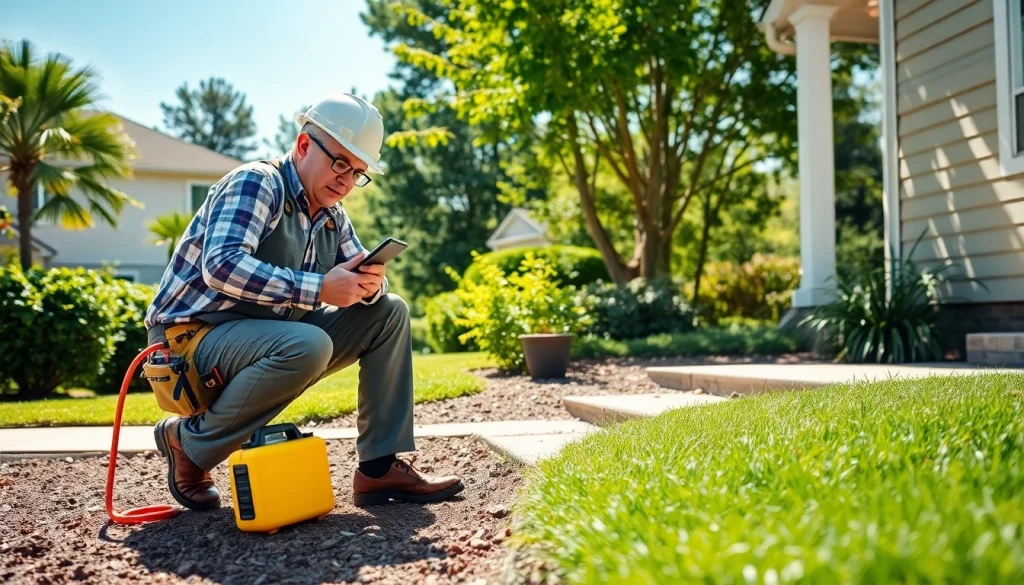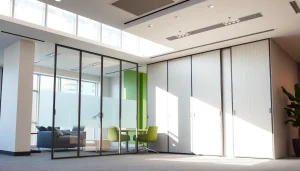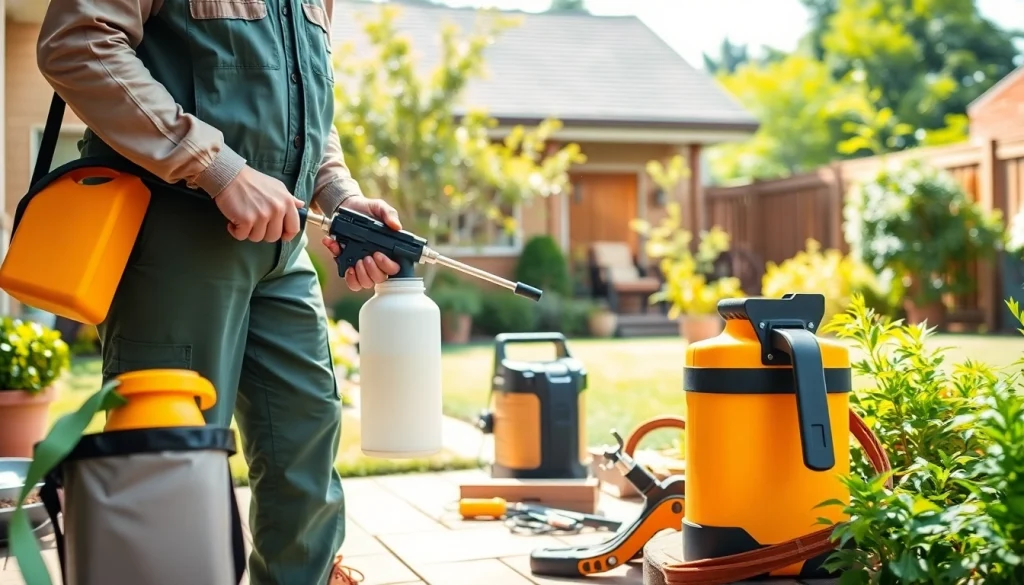Understanding Termite Treatments
Termites pose a significant risk to homeowners, causing billions of dollars in damage each year. The destruction they leave behind can often be silent and unnoticed until it’s too late. Therefore, understanding the types of termite treatments available and how to implement them is crucial for protecting your home. This comprehensive guide will elucidate the nature of termites, highlight methods for their detection, and explore various treatment options available to homeowners.
What are Termites and Why Treat Them?
Termites are small, social insects known for their wood-eating habits. They are often referred to as “silent destroyers” because they can chew through wood, flooring, and even wallpaper hiding in your walls without any immediate signs. Termites typically live in colonies, which can range from a few hundred to several million individuals, depending on the species. The most common types of termites found in homes include subterranean, drywood, and dampwood termites.
Failure to address a termite problem promptly can lead to severe structural damage. In fact, the National Pest Management Association reports that termites cause an estimated $5 billion in property damage each year in the United States alone. Timely intervention ensures that your home’s structural integrity is maintained and that repair costs remain manageable.
Common Signs of Termite Infestation
Detecting a termite infestation early can be challenging. However, some common signs can help you identify a potential problem:
- Frass: This is termite droppings and can appear as tiny, wood-colored pellets near wooden structures.
- Hollow-sounding Wood: Termites eat drywall and wood from the inside out. If you knock on a wooden beam, and it sounds hollow, it might be a sign of infestation.
- Soft or Puckered Spots: Inspect wooden structures for soft, weak, or hollow spots, especially in areas that are prone to moisture.
- Swarmers: Termite swarmers are winged termites that leave the colony to establish a new home.
- Paint Damage: Bubbling paint or wallpaper may indicate moisture accumulation caused by termite activity.
Overview of Different Termite Treatments
When it comes to termite treatments, options vary significantly depending on the type and severity of the infestation. The primary categories of termite treatments are chemical treatments, bait systems, and physical barriers, each having its unique benefits and drawbacks.
Types of Termite Treatments
Liquid Chemical Treatments Explained
Liquid chemical treatments are one of the most common methods used to control termites. These insecticides are applied to the soil around a home’s foundation, creating a barrier that prevents termites from entering. There are two primary types:
- Pre-Construction Treatments: Typically applied during the construction of a new home, these treatments form a protective barrier before any termite infestation can occur.
- Post-Construction Treatments: These are applied around existing structures. They may involve drilling holes in concrete slabs where the chemical is injected.
One significant advantage of liquid chemical treatments is their long-lasting effectiveness, often providing protection for several years. However, they may have environmental concerns, particularly if non-target species are affected.
Termite Bait Systems: How They Work
Termite bait systems are another effective approach to termite control. They consist of bait stations strategically placed around a property. These stations contain a cellulose material that termites find attractive, laced with a slow-acting insecticide. When termites consume the bait, they share the insecticide with other colony members, eventually leading to the colony’s elimination.
Bait systems are less invasive than liquid treatments and can be used for targeted control. Homeowners can continuously monitor these stations, making adjustments as necessary. Regular inspections for the bait systems are critical in ensuring their effectiveness.
Physical Barriers and Their Effectiveness
Physical barriers involve the use of materials that termites cannot penetrate. For example, steel mesh can be installed around a building’s foundation or even under concrete slabs to deter termite entry. Physical barriers are particularly effective during the construction phase and can provide long-lasting protection. However, they require an upfront investment and proper installation.
Choosing the Right Termite Treatment
Factors to Consider When Selecting Treatments
Selecting the appropriate termite treatment requires careful consideration of several factors:
- Type of Termite: Identifying the species of termite will help choose the most effective treatment method. Subterranean, drywood, and dampwood termites may each respond better to specific treatments.
- Extent of Infestation: A thorough inspection should be conducted to determine the level of infestation. Minor infestations may be managed with DIY methods, while severe infestations warrant professional intervention.
- Environmental Impact: If you are concerned about using chemicals, consider bait systems or physical barriers.
- Budget: Treatment costs can vary significantly, so weighing the long-term expenses against immediate solutions is crucial.
- Future Prevention: Incorporate treatments that also focus on prevention to avoid future infestations.
Comparing DIY vs Professional Treatments
DIY termite treatments might seem appealing for their cost-effectiveness. Products such as sprays and bait systems are readily available at home improvement stores. However, while DIY solutions can work for minor infestations, they often lack the long-term effectiveness of professional treatments. Professional pest control services possess the expertise, advanced techniques, and materials necessary to handle severe infestations efficiently.
Moreover, professionals are equipped to perform thorough inspections and provide tailored treatments for individual situations. Some services also offer warranties, ensuring re-treatment if termites return. Thus, while DIY may save money upfront, it is essential to consider the potential costs of more extensive damages down the line.
Cost Analysis of Termite Treatments
The cost of termite treatments can vary significantly based on the method selected and the severity of the infestation. On average, homeowners can expect:
- Liquid Treatments: Ranging from $5 to $12 per linear foot or $900 to $2,500 for treatment and inspection.
- Bait Systems: Initial costs can range from $1,500 to $4,000, which includes installation and ongoing monitoring.
- DIY Solutions: Generally, between $10 to $300, depending on the products purchased.
In addition to these treatment costs, you may need to consider repair costs for any structural damage caused by the infestation. Investing in a professional inspection may initially seem costly but can save homeowners money by preventing further damage.
Implementing Termite Treatments
Steps for Preparing Your Home
Preparation is a critical step in effectively implementing any termite treatment. Before beginning treatment:
- Conduct a thorough inspection to identify affected areas.
- Clear the area of debris, wood piles, and potential food sources for termites.
- Ensure that the treatment area is accessible for professionals, as they may require entry to basements, crawlspaces, and the exterior of your home.
- If using liquid treatments, ensure that all pets and family members are safely relocated during the process.
Monitoring and Maintenance Post-Treatment
After treatment, monitoring and maintaining your property is crucial to ensure termites do not return. Here are a few steps to follow post-treatment:
- Perform regular inspections to look for signs of new termite activity.
- Maintain proper ventilation and reduce moisture levels in and around your home, as termites thrive in humid environments.
- Consider installing or maintaining bait systems to provide ongoing monitoring and protection.
- Keep a detailed log of inspections and treatments to keep track of any changes in termite activity.
When to Call a Pest Control Professional
Knowing when to engage a pest control professional can save you time, stress, and money in the long run. Consider contacting a professional if:
- You detect signs of severe infestation or if you suspect an active problem.
- You’re unsure how to safely and effectively treat a termite problem.
- You’ve made previous attempts at treatment, but they’ve been unsuccessful.
- Your home has been subjected to conditions that may invite termites, such as water leaks or compromised foundations.
Long-Term Prevention Strategies
Home Maintenance Tips to Avoid Termites
Prevention is critical in avoiding the costly consequences of termite damage. Implement these home maintenance tips to make your house less attractive to termites:
- Regularly inspect and maintain gutters and downspouts to ensure proper water drainage away from your foundation.
- Seal any openings in your home’s exterior to block entry points for termites.
- Store firewood and other wooden materials away from your home’s foundation and at least 18 inches off the ground.
- Maintain adequate ventilation in crawl spaces to reduce moisture buildup.
- Routine inspections for leaks and damages, repairing any issues promptly.
Seasonal Checks and Inspections
Conduct seasonal checks of your property to identify potential termite threats proactively. Scheduling inspections at least once a year, ideally in the spring or fall when termite activity is at its peak, can help catch problems before they escalate. During these checks:
- Look for signs of wood damage or frass.
- Check for moisture issues in and around the structures.
- Inspect areas with wood involvement, such as decks, fences, and siding.
Using Natural Remedies for Additional Protection
Many homeowners opt for natural remedies to complement their termite prevention strategies. While these may not be as effective as professional treatments, they can add an extra layer of protection:
- Orange Oil: Contains d-limonene, which is toxic to termites. Apply it to affected wooden areas for localized treatment.
- Neem Oil: This natural insecticide disrupts the reproductive and growth stages of termites, making it a potentially effective deterrent.
- Boric Acid: When mixed with sugar, boric acid attracts termites and can effectively kill them upon ingestion.
Using natural remedies requires patience and consistency, as they may not provide immediate results like professional pest control methods.
In conclusion, understanding the types of termite treatments available, recognizing the signs of infestation, and implementing effective prevention strategies are essential for every homeowner. By remaining vigilant, proactive, and informed, you can protect your property from the costly damage termites can cause.







